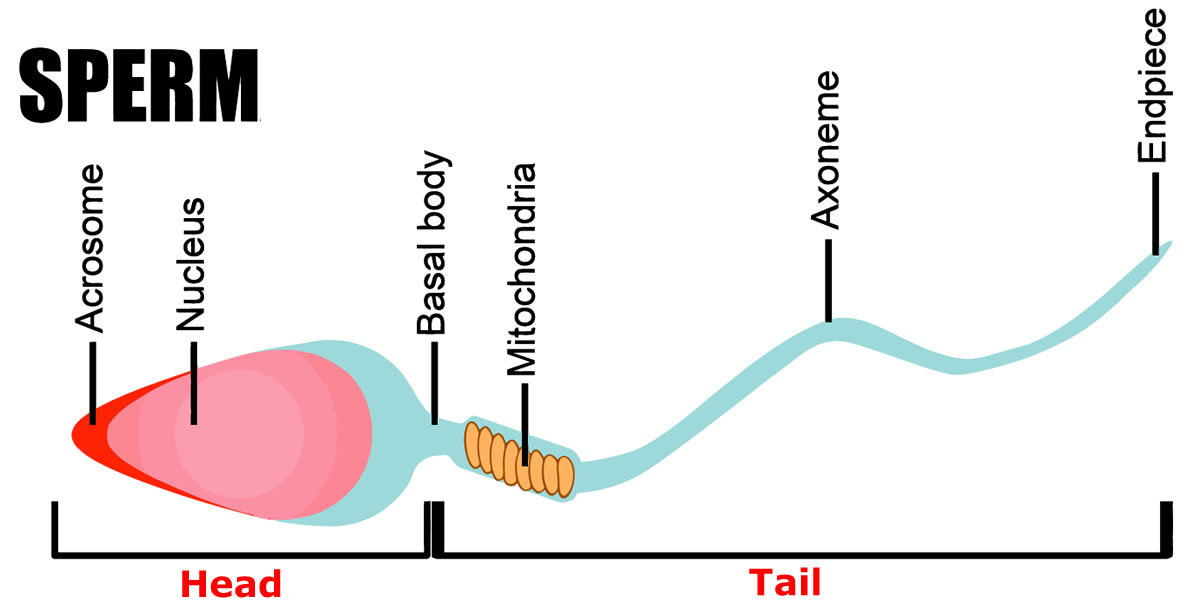
Sperms are produced in tightly coiled microscopic tubules called seminiferous tubules present in each testicle.
The entire process of sperm production takes about seventy days.
These sperms than travel to coiled structure called epididymis present at the back of the testes till they get matured.
The matured sperm are then transported via tube from each testes called vas difference to form important part of the semen.
Unlike females who have all the eggs present at birth to be matured on puberty one at a time, in men sperm production begins only at puberty.
Sperms live for about 40 days and if unused for ejaculation get disintegrated in the body harmlessly.
Semen
On an average quantity of semen per ejaculate is about one teaspoonful (3 to 5 ml).
Although the quantity of sperm in each ejaculate may vary in each person and even on different occasions depending on age of a person, frequency of ejaculation and other factors. However, sperm count of 40 to 120 million per millilitre of semen is considered normal.
That means about 120 to 600 million sperm could be present in each ejaculate.
Seminal fluid which makes 70% of the fluid quantity of semen, is a whitish to grey colour and creamy and sticky texture.
At the time of ejaculation, the semen is thick in consistency, but gets liquefied quickly thereafter.
It contains water, mucous, sugar along with some chemicals which provide nourishment and energy to sperms. Semen also contains secretion from Prostate gland which neutralizes acidity of male urethra and female vagina and the prostaglandin hormone that causes contractions in uterus and Fallopian tubes for facilitating upward journey of sperms towards matured egg placed at the end of one of the two Fallopian tubes.
Smegma
In uncircumcised penis, when the foreskin is rolled back, tiny bumps are seen at the base of the glans (head) of the penis.
These are glands that produce a white creamy substance called Smegma, which gathers naturally under the foreskin for smooth gliding of the foreskin.
Boys should be trained to glide back their foreskin and clean the surface of glans regularly while taking bath. Otherwise, this smegma accumulates under the foreskin along with dead skin cells, dirt particles, sweat and bacteria creating an unhygienic condition causing inflammation, bad smell and infection.
Habit of cleaning the area under the foreskin should continue even during adulthood.
Retracting foreskin is not recommended for infants.
In circumcised men, the smegma does not collect, as the glans is open and gets cleaned easily.